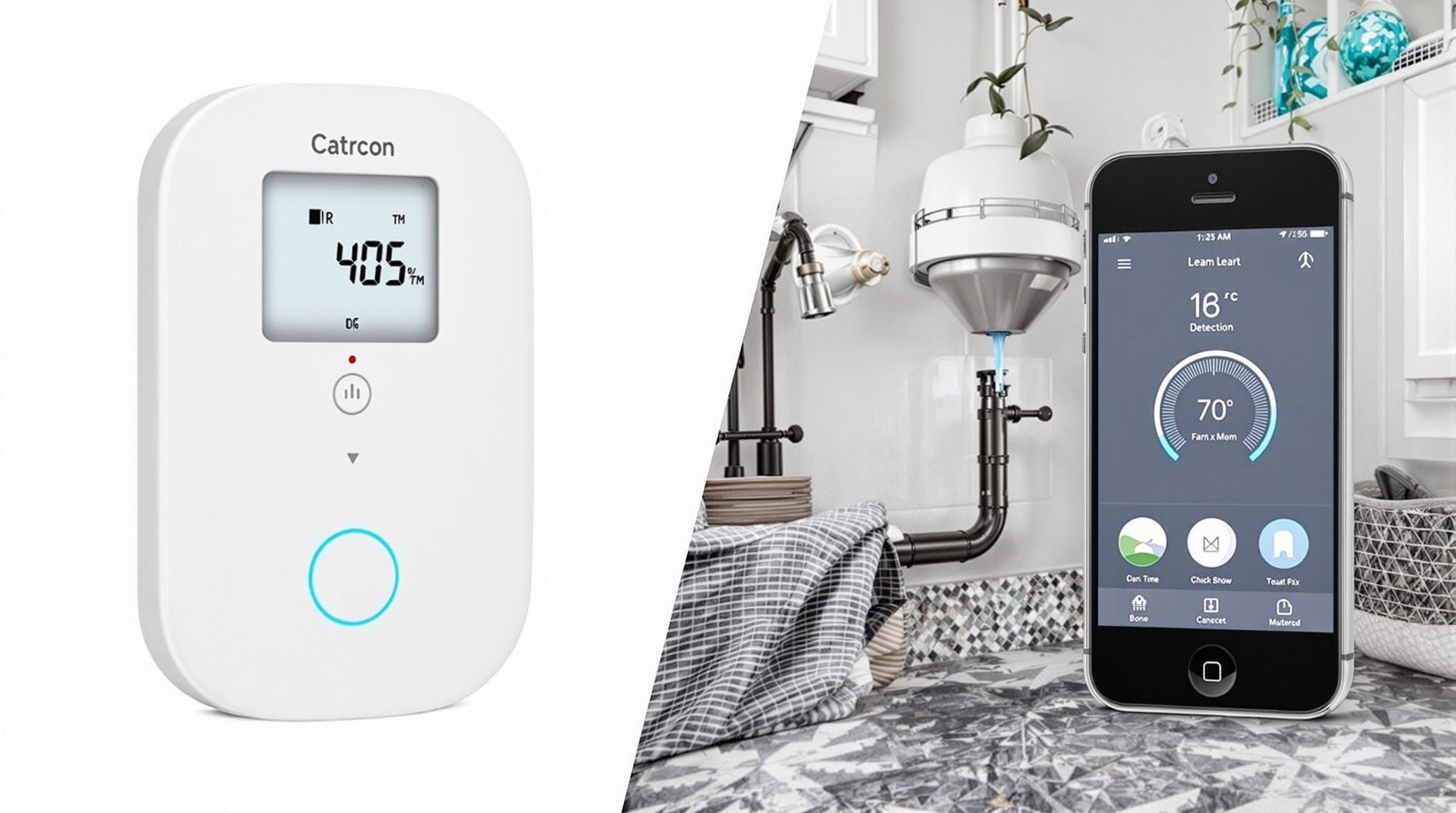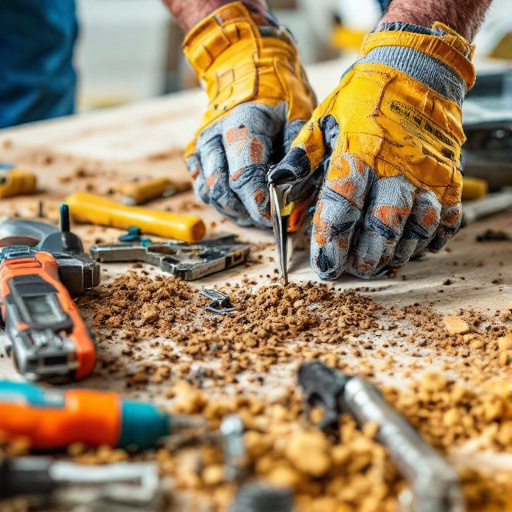Featured Articles
- Repairing Relationships: The Surprising Role of Home Repair Services in Strengthening Family Bonds
- Revolutionizing Home Repair: The Rise of DIY AI Assistants in Fixing Household Problems
- The Hidden Costs of DIY: When Home Repair Projects Become Money Pits
- The Hidden Costs of DIY: When Home Repairs Turn into Financial Nightmares
- The Rise of DIY Disaster Stories: When Home Repair Services Become a Last Resort
The Rise of DIY Psychology: How Repairing Your Home Can Heal Your Mind and Spirit
The Rise of DIY Psychology: How Repairing Your Home Can Heal Your Mind and Spirit
DIY psychology is emerging as a powerful tool for mental well-being through the act of home improvement. This article explores how engaging in hands-on projects around the house not only enhances our living space but also enriches our mind and spirit, offering a healthy therapeutic outlet.
The Therapeutic Benefits of DIY Projects
Engaging in DIY home repairs can be remarkably therapeutic. According to a 2021 study published in the journal Psychology of Aesthetics, Creativity, and the Arts, individuals who participate in creative projects report higher levels of happiness and wellbeing. Channeling energy into transforming one's living space fosters a sense of accomplishment while distracting from stressors.
Creating a Sanctuary: The Role of Environment in Mental Health
Have you ever noticed how decluttering or reorganizing your room can lead to mental clarity? There's a reason for that! Studies show that our surroundings can greatly affect our mental well-being. In a survey conducted by the American Psychological Association, 66% of respondents noted that a clean and organized environment improved their mood. Repairing and beautifying your space not only creates a physical sanctuary but also serves as a balm for the restless mind.
Case Study: From Depression to Decoration
Consider the story of Sarah, a 35-year-old graphic designer from Ohio who faced significant challenges with depression. After deciding to refurnish her home on a tight budget, she found herself exploring local thrift stores and learning DIY techniques through online tutorials. Over time, the project became more than just a home renovation venture; it morphed into a journey of self-discovery and healing. “I never expected that painting walls would paint my life with joy,” Sarah shared.
Budgeting for Your Mental Health
Now, let’s talk finances. DIY doesn’t just nourish the soul; it can be kind to your wallet as well! According to HomeAdvisor, the average cost of hiring a professional painter for a room is about $400 to $800, depending on size and complexity. However, a DIY approach can reduce that expense to almost $50 for paint, making it an economically appealing option. This financial freedom can also alleviate stress, since money often plays a fundamental role in our emotional state.
The Science Behind Hands-On Activities
The act of engaging one’s hands in tasks can induce a state known as "flow"—a term coined by psychologist Mihaly Csikszentmihalyi. This state allows an individual to become completely immersed in the activity, promoting mindfulness and a break from negative thoughts. It’s not just about the outcome; it’s about the process. Even common activities like sanding wood or kneading dough can ground us, creating sensory experiences that quiet our racing thoughts.
The Joy of Upcycling: A Sustainable Approach
Consider, too, the appeal of upcycling old furniture. Not only do we create something new from something worn, but we also engage with our environment in an eco-friendly manner. The Environmental Protection Agency (EPA) reports that more than 292 million tons of trash is generated in the United States every year, a significant portion of which comes from household items. By upcycling, we not only heal our space but also contribute to healing our planet.
Making Progress: Small Wins, Big Impact
In a world that often feels chaotic, achieving small victories can have a profound effect on our mental health. Completing a DIY project—even a small one—can offer a rush of satisfaction. According to Dr. Martin Seligman, a pioneer in positive psychology, achieving small benchmarks builds a sense of efficacy, translating into greater confidence in other areas of life.
Crafting Connections: The Social Aspect of DIY
Interestingly, DIY projects also provide opportunities for social engagement. Whether it’s a weekend project with a partner or a crafty gathering with friends, this social dynamic serves as an additional layer of emotional support. According to a 2019 survey from the National Institute of Mental Health, people who engaged in social activities demonstrated lower levels of anxiety and depression compared to those who did not.
Tools of the Trade: Empowering Yourself
Much like learning to cook or play an instrument, developing DIY skills can foster confidence. A toolbox becomes not just a collection of tools but a symbol of self-sufficiency. “Using tools feels empowering,” says 18-year-old Alex, who picked up woodworking in high school. “Every time I complete a new piece, I feel like I can tackle anything.”
Societal Shift: The DIY Movement and Mental Health Awareness
The rise of the DIY culture can also be linked to the increasing awareness of mental health issues. With social media platforms showcasing countless DIY tutorials, people are finding new outlets to express themselves creatively, fostering resilience and mindfulness. A 2022 Pew Research study mentioned that over 70% of young adults reported that they found creative activities to be a constructive way to cope with stress.
Humor in Home Repair: Laughter is the Best Medicine
Let’s face it, not all DIY projects go as planned. Who hasn’t accidentally painted a cat while touching up the walls? Or glued their fingers together when attempting a simple repair? It’s these humorous misadventures that often bring us closer to our friends and families, creating shared laughter that ties us together. Laughter, as we know, is also a fantastic stress reliever!
Final Thoughts on DIY Psychology
As we explore the multifaceted connections between home repairs and mental well-being, it’s clear that engaging in DIY projects is not just about fixing walls or repainting rooms. It’s an avenue for self-reflection, creativity, and connection—all elements that contribute significantly to our overall health. So next time you feel the weight of the world pressing down on you, grab a paintbrush, hammer, or even a glue gun, and turn your home into your personal oasis of wellness.
Start Your DIY Journey Today!
It is time to embrace the power of DIY psychology. Regardless of your skill level, starting small is key. Focus on simple projects that can cultivate a positive mindset and gradually build your confidence. Whether you’re redesigning your space, upcycling old furniture, or simply helping a friend with a project, the benefits are multifarious. Get started, and witness how repairing your home can pave the way for healing your mind and spirit.




